Table of Contents[Hide][Show]

While they may look alike, do not confuse zucchini with its familial counterpart, the cucumber! This mild-tasting fruit with a delicate flavor stands out on its own merits. Depending where you live, this veggie may be known by different names including courgette, summer squash, and marrow. In North America it is commonly known as zucchini, coming from the Italian word for marrow (which is the name given to the mature version of this fruit). No matter what you call it, this culinary veggie is worth adding to your diet!
Zucchini is considered a ‘summer squash’, which means it is harvested when immature such that the seeds and rind are soft and edible, as opposed to ‘winter squash’ which is left to grow through the summer and aren’t harvested until their skin has hardened into a tough rind.
Zucchini is a very well-known member of the squash family, Curcurbitaceae (which consists of over 800 species including squash (duh!), melon, pumpkin, and cucumber to name a few). Specifically, zucchini belongs to the genus Cucurbita pepo, along with several other familiar foods, such as pumpkin, and spaghetti and acorn squashes, to name a few. However, zucchini differs in that it is considered a ‘summer squash’, which means it is a member of Curcurbitaceae that is harvested when immature such that the seeds and rind are soft and edible. Summer squash include zucchini (club-shaped and green or yellow), crookneck or straight neck squash (yellow with a narrower “neck”), pattypan squash (small, yellow, and resembling a toy top in shape), and more. In contrast, winter squash, such as pumpkin, are left to grow through the summer and aren’t harvested until their skin has hardened into a tough rind. The word squash comes from the Narragansett Native American word “askutasquash,” which translates to “eaten raw or uncooked” (indeed, summer squash are edible raw—including the seeds and skin— though they’re more often consumed cooked). These tasty botanical fruits are descendants of squashes that originated in Central America; in fact, summer squash seeds have been found preserved in Mexican caves dating back 10,000 years! However, zucchini specifically, was actually developed for the first time much later in northern Italy in the late 19th century, originating from American varieties which reached Italy in the 16th century. Zucchini was then likely brought back to America by Italian immigrants, where the first records of zucchini in the United States date back to the early 1920s (talk about a world traveler!). In botanical terms, zucchini is classified as a berry. However, like tomatoes and cucumbers, this cylindrical fruit, is perceived, prepared, and eaten as a vegetable in culinary preparations.
Nutrivore Score for Zucchini – 1477
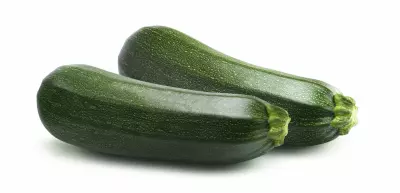
Zucchini has a Nutrivore Score of 1477, making it a super nutrient-dense food! Plus, it is a low-carb and low-calorie-density food; the calorie count of zucchini is only 19 calories per cup!
Per serving, zucchini is a best source (>50% daily value) of polyphenols; an excellent source (20-50% daily value) of carotenoids and vitamin C; and a good source (10-20% daily value) of vitamin B6 (pyridoxine) and vitamin B7 (biotin).
Ditch Diets. Embrace Nutrients. Start with These 5 Free Guides.
Sign up for the free weekly Nutrivore Newsletter and get 5 high-value downloads—delivered straight to your inbox—that make healthy eating simple and sustainable.
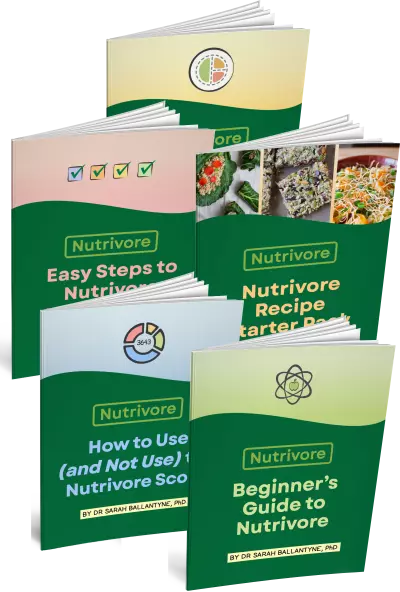
Zucchini Nutrition Facts
One serving of zucchini is standardized to 1 cup, sliced or about 113 grams (4 ounces). For reference, a typical large zucchini weighs 323 grams, a medium zucchini, 196 grams, and a small zucchini, 118 grams, which means: one serving of zucchini is roughly equivalent to one small zucchini. When you cook zucchini, it reduces in volume: 1 cup raw zucchini is roughly equivalent to a little less than 2/3 cup boiled zucchini.
Zucchini Nutrition Facts Per Serving
| Zucchini, raw | Nutrivore Score: 1477 | Nutrient Density: Super! |
|---|---|---|
| Serving Size: 1 cup, sliced (1 small) (113 grams) | Protein: 1.4 grams | Net Carbohydrates: 2.4 grams |
| Calories: 19 | Total Fat: 0.4 grams | Dietary Fiber: 1.1 grams |
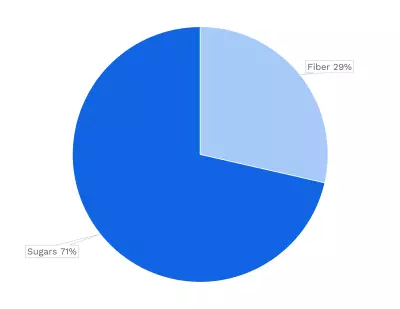

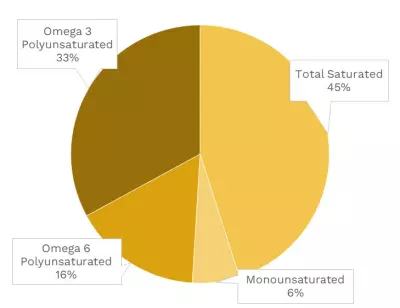
| VITAMINS | ||
|---|---|---|
| Vitamin A | 11.3 μg RAE | 1% DV |
| Vitamin B1 (Thiamin) | 50.9 μg | 4% DV |
| Vitamin B2 (Riboflavin) | 106.2 μg | 8% DV |
| Vitamin B3 (Niacin) | 0.5 mg | 3% DV |
| Vitamin B5 (Pantothenic Acid) | 0.2 mg | 5% DV |
| Vitamin B6 (Pyridoxine) | 184.2 μg | 11% DV |
| Vitamin B7 (Biotin) | 3.1 μg | 10% DV |
| Vitamin B9 (Folate) | 27.1 μg | 7% DV |
| Vitamin B12 (Cobalamin) | 0.0 μg | 0% DV |
| Vitamin C | 20.2 mg | 22% DV |
| Vitamin D (D2 + D3) | 0.0 μg | 0% DV |
| Vitamin E | 0.1 mg | 1% DV |
| Vitamin K | 4.9 μg | 4% DV |
| Choline | 10.7 mg | 2% DV |
| Myo-Inositol | 59.9 mg | ~ |
| CoQ10 | ~ | ~ |
| FUNCTIONAL FATS | ||
|---|---|---|
| MUFA | 0.0 g | 0% DV |
| ALA | 68.9 mg | 4% DV |
| EPA + DHA | 0.0 mg | 0% DV |
| CLA | 0.0 mg | ~ |
| Linoleic Acid | 0.0 g | 0% DV |
| MCT’s | 0.0 g | ~ |
| MINERALS | ||
|---|---|---|
| Calcium | 18.1 mg | 1% DV |
| Copper | 59.9 μg | 7% DV |
| Iodine | ~ | ~ |
| Iron | 0.4 mg | 2% DV |
| Magnesium | 20.3 mg | 5% DV |
| Manganese | 200.0 μg | 9% DV |
| Phosphorus | 42.9 mg | 3% DV |
| Potassium | 294.9 mg | 6% DV |
| Selenium | 0.2 μg | 0% DV |
| Sodium | 9.0 mg | 0% DV |
| Zinc | 0.4 mg | 3% DV |
| PHYTONUTRIENTS | ||
|---|---|---|
| Carotenoids | 2536.9 μg | ~ |
| Polyphenols | 979.7 mg | ~ |
| Phytosterols | 24.7 mg | ~ |
| Glucosinolates | ~ | ~ |
| Thiosulfinates | ~ | ~ |
| Betalains | ~ | ~ |
| AMINO ACIDS & PEPTIDES | ||
|---|---|---|
| Taurine | ~ | ~ |
| Ergothioneine | ~ | ~ |

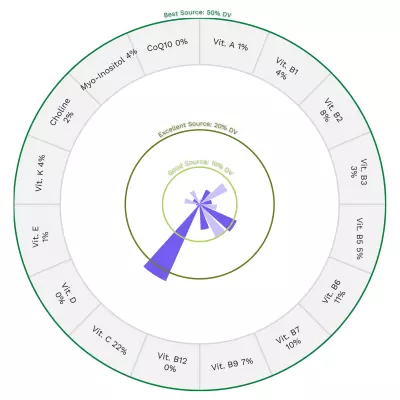
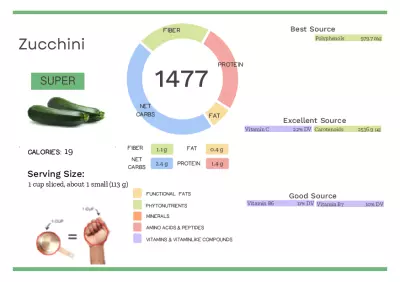
Zucchini Nutrition Varies With Cooking and Processing
The Nutrivore Score of zucchini varies depending on processing and the method of preparation. For instance, frozen zucchini is conveniently available at your local grocery store year-round.
| NUTRIVORE SCORE | |
|---|---|
| Zucchini, includes skin, cooked, boiled, drained, with salt | 1505 |
| Zucchini, includes skin, cooked, boiled, drained, without salt | 1505 |
| Zucchini, includes skin, frozen | 1315 |
| Zucchini, includes skin, frozen, cooked, boiled, drained, with salt | 1377 |
| Zucchini, includes skin, frozen, cooked, boiled, drained, without salt | 1261 |
| Zucchini, includes skin, raw | 1477 |
Summer Squash Nutrition Varies With Variety
There are many varieties of summer squash, ranging in color, shape, and nutrient profile, which means their Nutrivore Scores vary too. To maximize all the benefits summer squash has to offer, try incorporating different types into your diet.
| NUTRIVORE SCORE | |
|---|---|
| Chayote | 871 |
| Crookneck and straightneck squash, raw | 1177 |
| Scallop squash, raw | 1394 |
| Summer Squash, all varieties, raw | 1596 |
| Zucchini, baby, raw | 7001 |
| Zucchini, includes skin, raw | 1477 |
Impressed that zucchini is THAT nutritious? Maybe your friends will be too!
Health Benefits of Zucchini Nutrients
Let’s take a closer look at all of the best and excellent source of nutrients found in a 1-cup serving of zucchini and see how they benefit our health.
Zucchini Provides 979.7 mg of Polyphenols
Zucchini is an outstanding source of polyphenols, providing 979.7 mg of polyphenols per 1-cup serving!
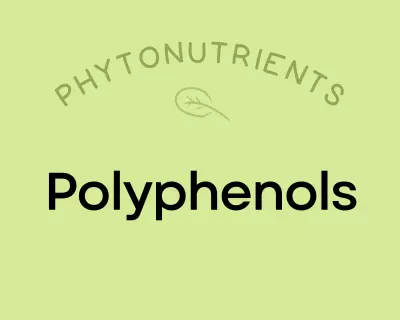
Polyphenols play a huge role in protecting against cancer, heart disease, diabetes, asthma, osteoporosis, neurodegenerative diseases, and other conditions associated with oxidative stress. In fact, a major reason foods like red wine and olive oil (as well as diets rich in both, such as the Mediterranean diet) show up as so beneficial may be due to their high polyphenol content! Along with chronic diseases, supplementing with polyphenols has been shown to protect against infections and reduce the signs of aging. Polyphenols exert their most potent effects by acting as antioxidants—preventing cellular damage by neutralizing hazardous oxygen radicals and improving cellular health as a result (which, in turn, benefits virtually every system in the body). As a result of their antioxidant properties, polyphenols also boost the immune system and protect against both chronic and acute diseases. In addition, polyphenols can help regulate enzyme function, stimulate cell receptors, modulate the functions of inflammatory cells (including T and B lymphocytes, macrophages, platelets, and natural killer cells), alter adhesion molecule expression, affect nerve cells and cardiac muscle cells, and exert antiviral effects. Learn more about polyphenols here.
Zucchini Provides 2536.9 μg of Carotenoids
Zucchini is an excellent source of carotenoids such as lutein and zeaxanthin, providing 2536.9 μg of carotenoids per 1-cup serving!
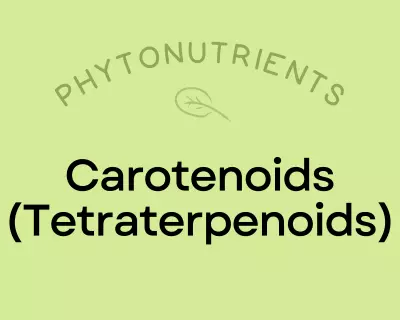
Carotenoids are a diverse group of phytonutrients that are responsible for giving fruits and vegetables vibrant red, orange, and yellow pigmentation. They were one of the earliest phytonutrients ever investigated by scientists (with research dating back to the 1800s!). Across studies, eating foods high in carotenoids appears to reduce the risk of head and neck cancers, supports vision health (particularly age-related eye diseases), may protect against metabolic syndrome and diabetes, and can reduce inflammation. Carotenoids have strong antioxidant properties, and help facilitate communication between cells by promoting the synthesis of connexin proteins, which create gap junctions in cell membranes that allow small molecules to be exchanged (which is part of how cells “talk” to each other!). Consuming carotenoids with fat significantly increases their absorption. Learn more about carotenoids here.
Zucchini Provides 22% DV Vitamin C
Zucchini is also an excellent source of vitamin C, providing 22% of the daily value per 1-cup serving!

Vitamin C is a water-soluble vitamin that has powerful antioxidant properties (meaning it can help combat oxidative damage from free radicals and reactive oxygen species) and that serves as an enzyme cofactor (meaning it’s needed for enzymes to do their job, for example vitamin C is necessary for collagen synthesis, which is essential for bones, joints, teeth, blood vessels, skin and eyes) and playing important roles in immune system and skin health. Higher intakes of vitamin C are linked to reduced risk of heart disease, some forms of cancer, type 2 diabetes, cataracts, age-related macular degeneration, and gout. Vitamin C can also help regulate the stress response and reduce anxiety, and there’s preliminary evidence that it may also help prevent Alzheimer’s disease. Learn more about vitamin C here.
Want to know the top 500 most nutrient-dense foods?

Top 500 Nutrivore Foods
The Top 500 Nutrivore Foods e-book is an amazing reference deck of the top 500 most nutrient-dense foods according to their Nutrivore Score. Think of it as the go-to resource for a super-nerd, to learn more and better understand which foods stand out, and why!
If you are looking for a quick-reference guide to help enhance your diet with nutrients, and dive into the details of your favorite foods, this book is your one-stop-shop!
Buy now for instant digital access.
How Much Zucchini Should We Eat Per Day?
Think zucchini is bland and boring? Think again! This underrated veggie is versatile in the kitchen (I’m looking at you zoodles!), full of phytonutrients great for our health, and a worthy intentional addition to our diet!
Every serving of fresh, whole vegetables or fruit we eat daily reduces the risk of all-cause mortality by 5% to 8%, with the greatest risk reduction seen when we consume five or more servings per day. In fact, consuming 800 grams of vegetables and fruits daily reduces all-cause mortality by 31% compared to eating less than 40 grams daily. A 2017 meta-analysis showed that 2.24 million deaths from cardiovascular disease, 660,000 deaths from cancer, and 7.8 million deaths from all causes could be avoided globally each year if everyone consumed 800 grams of veggies and fruits every day.
Eating vegetables and fruit in abundance lowers risk of cancer, cardiovascular disease, type 2 diabetes, obesity, chronic kidney disease, osteoporosis and bone fragility fractures (including hip fracture), cognitive impairment and dementia (including Alzheimer’s disease), neurodegenerative diseases, asthma, allergies, chronic obstructive pulmonary disease, age-related macular degeneration, cataracts, glaucoma, depression, ulcerative colitis and Crohn’s disease, rheumatoid arthritis, inflammatory polyarthritis, non-alcoholic fatty liver disease, acne, seborrheic dermatitis, and lowers markers of inflammation. Learn more in Importance of Vegetables and Fruit.
Covering half of your plate with a variety of vegetables (and three quarters of your plate if your starchy food is a root vegetable or winter squash) at each meal is a simple way to easily achieve the goal of 5 or more servings of vegetables daily.
Studies have shown that zucchini helps reduce the risk of cancer and oxidative stress, and improves skin health, plus boosts hydration as it’s 95% water!
It’s always best to mix up the veggies you eat day to day (aiming for a wide variety of different vegetables and fruits throughout the week), and zucchini definitely has a place at the table.
Easily track your servings of Nutrivore Foundational Foods!

The Nutrivore Weekly Serving Matrix
The Nutrivore Weekly Serving Matrix digital resource is an easy-to-use and flexible weekly checklist designed to help you maximize nutrient-density and meet serving suggestions of Nutrivore foundational foods, all without having to weigh or measure your foods!
Includes a 22-page instructional guide and downloadable interactive guides.
Buy now for instant digital access.
cITATIONS
Expand to see all scientific references for this article.
Clements RS Jr, Darnell B. Myo-inositol content of common foods: development of a high-myo-inositol diet. Am J Clin Nutr. 1980 Sep;33(9):1954-67. doi: 10.1093/ajcn/33.9.1954. PMID: 7416064.
Gómez-Maqueo A, Escobedo-Avellaneda Z, Welti-Chanes J. Phenolic Compounds in Mesoamerican Fruits-Characterization, Health Potential and Processing with Innovative Technologies. Int J Mol Sci. 2020 Nov 7;21(21):8357. doi: 10.3390/ijms21218357. PMID: 33171785; PMCID: PMC7664671.
Nystrom L, Schar A, Lampi AM. Steryl glycosides and acylated steryl glycosides in plant foods reflect unique sterol patterns. European Journal of Lipid Science and Technology. 2012. Vol 114(6):656-669. doi: https://doi.org/10.1002/ejlt.201200033.
USDA Food Central Database: Squash, summer, zucchini, includes skin, raw
Watanabe T, Kioka M, Fukushima A, Morimoto M, Sawamura H. Biotin content table of select foods and biotin intake in Japanese. Int J Anal Bio-Sci. 2014. Vol 2(4):109-125.


